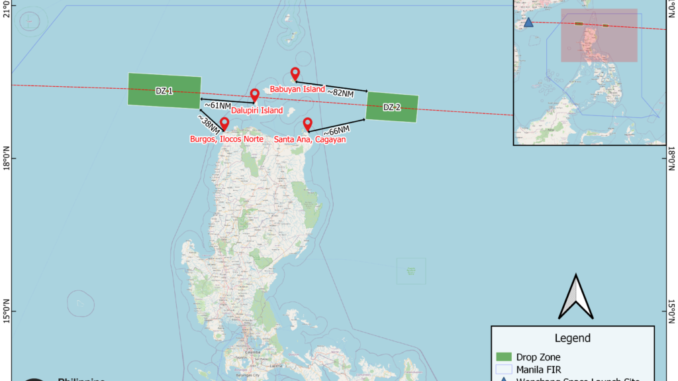
China launched its Long March 7A rocket on Thursday evening, according to the Philippine Space Agency (PhilSA), prompting it to warn of possible fallen debris.
“The rocket was launched from the Wenchang Spacecraft Launch Site in Wenchang, Hainan around 08:25 PM PhST (Philippine standard time) on 22 August 2024,” PhilSA said in an advisory.
The anticipated debris from the rocket launch was expected to fall within designated drop zones, roughly 38 nautical miles from Burgos, Ilocos Norte, and 66 nautical miles from Sta. Ana, Cagayan.
Details about the rocket’s drop zone were communicated via a Notice to Airmen (NOTAM) alerting to “aerospace flight activity.” Prior to the launch, PhilSA issued a pre-launch report to relevant government agencies and authorities.
While unburned debris from rockets, such as boosters and fairings, is intended to be discarded once the rocket reaches outer space, there is a potential risk to ships, aircraft, fishing boats, and other vessels passing through the drop zone.
Although the debris is not expected to land on land features or populated areas, it could still pose a hazard, the PhilSA reminded.
“There is also a possibility for the debris to float around the area and wash toward nearby coasts. Additionally, the possibility of an uncontrolled re-entry to the atmosphere of the rocket’s upper stages returning from outer space cannot be ruled out at this time,” it added.
PhilSA reiterated its advice for the public to notify local authorities if suspected debris is spotted. The space agency also cautioned against retrieving or approaching these materials, as they may contain hazardous substances like remnants of rocket fuel.


Be the first to comment